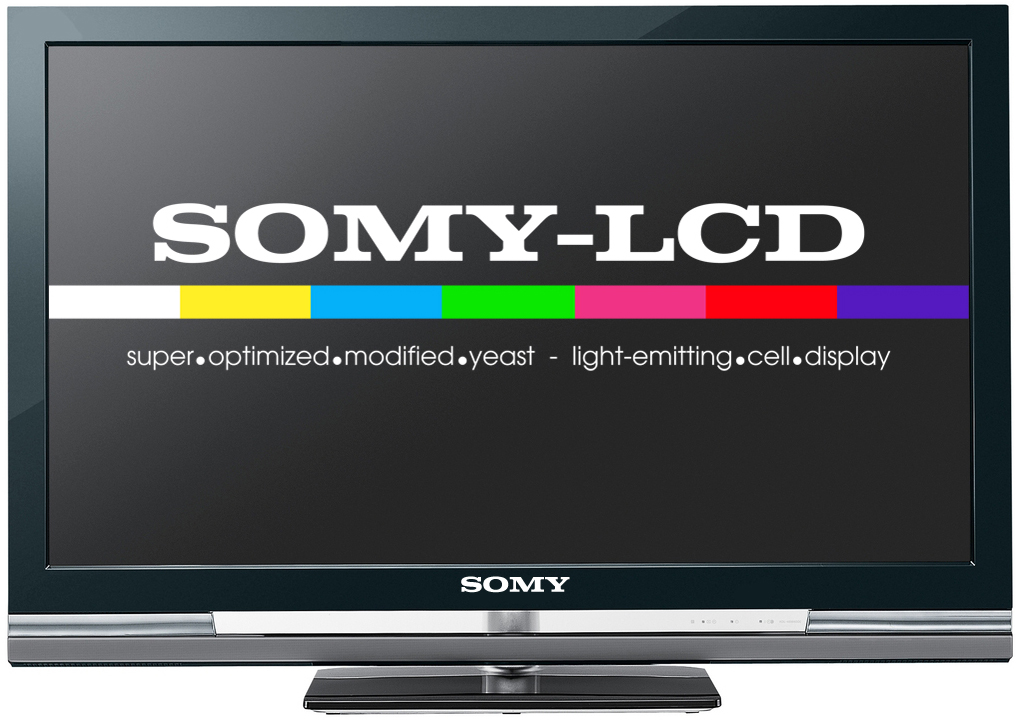Team:TU-Eindhoven/Project
From 2012.igem.org
| (6 intermediate revisions not shown) | |||
| Line 1: | Line 1: | ||
{{:Team:TU-Eindhoven/Templates/header}} | {{:Team:TU-Eindhoven/Templates/header}} | ||
| - | |||
| - | |||
| - | |||
| - | |||
| - | |||
| - | |||
| - | |||
| - | |||
| - | |||
| - | |||
| - | |||
{{:Team:TU-Eindhoven/Templates/head|image=https://static.igem.org/mediawiki/2012/1/1c/Projectdescription.jpg}} | {{:Team:TU-Eindhoven/Templates/head|image=https://static.igem.org/mediawiki/2012/1/1c/Projectdescription.jpg}} | ||
<h3>Super optimized modified yeast – light-emitting cell display</h3> | <h3>Super optimized modified yeast – light-emitting cell display</h3> | ||
| - | + | [[File:Description tv.jpg|350px|right|link=]] | |
| - | The | + | The aim of the project of the iGEM team of Eindhoven University of Technology in 2012 is to design and produce a new <span class= "lightblue">multi-colored display</span> in which <span class= "lightblue">genetically engineered cells</span> function as pixels, analogous to how a flat panel display works. The challenges are in reaching a high refresh rate of the screen, but also in creating a multi-colored prototype. There are three components to the display: genetically engineered cells that <span class= "lightblue">emit fluorescent light</span> in response to an <span class= "lightblue">electrical stimulus</span> (the 'pixels'), a <span class= "lightblue">device</span> to provide stimuli to each pixel (the 'control grid'), and a <span class= "lightblue">computational model </span> that predicts how cells will react to the stimuli from the device. The basic biological parts used in this project are <span class= "lightblue">yeast cells</span>, <span class= "lightblue">fluorescent calcium sensors</span> and <span class= "lightblue">voltage-gated calcium channels</span>. The laboratory work will focus on integrating these parts and establishing the desired reactions to electrical stimuli in order to create the 'pixels' of the display. The project is based on the research of iGEM <html><a href="https://2009.igem.org/Team:Valencia/home" target="_blank">Valencia 2009</a></html> who built a display on a 96-wells plate from yeast cells with Aequorin, but a <span class="lightblue">higher refresh rate</span> and <span class="lightblue">multiple colors</span> are aspired in our project. Computational modeling will provide insight into the <span class="lightblue">electrophysiology of yeast cells</span>, the <span class="lightblue">role of calcium channels</span> and the most <span class="lightblue">sensitive parameters</span> in calcium homeostasis in order to optimize the biological system. We will build an electronic device that is compatible with biological material to provide control over the pixels. The custom build hardware of the device is complemented with software written in LabView to generate images on the screen. |
{{:Team:TU-Eindhoven/Templates/footer}} | {{:Team:TU-Eindhoven/Templates/footer}} | ||
Latest revision as of 02:06, 27 September 2012

Super optimized modified yeast – light-emitting cell display

The aim of the project of the iGEM team of Eindhoven University of Technology in 2012 is to design and produce a new multi-colored display in which genetically engineered cells function as pixels, analogous to how a flat panel display works. The challenges are in reaching a high refresh rate of the screen, but also in creating a multi-colored prototype. There are three components to the display: genetically engineered cells that emit fluorescent light in response to an electrical stimulus (the 'pixels'), a device to provide stimuli to each pixel (the 'control grid'), and a computational model that predicts how cells will react to the stimuli from the device. The basic biological parts used in this project are yeast cells, fluorescent calcium sensors and voltage-gated calcium channels. The laboratory work will focus on integrating these parts and establishing the desired reactions to electrical stimuli in order to create the 'pixels' of the display. The project is based on the research of iGEM Valencia 2009 who built a display on a 96-wells plate from yeast cells with Aequorin, but a higher refresh rate and multiple colors are aspired in our project. Computational modeling will provide insight into the electrophysiology of yeast cells, the role of calcium channels and the most sensitive parameters in calcium homeostasis in order to optimize the biological system. We will build an electronic device that is compatible with biological material to provide control over the pixels. The custom build hardware of the device is complemented with software written in LabView to generate images on the screen.
 "
"